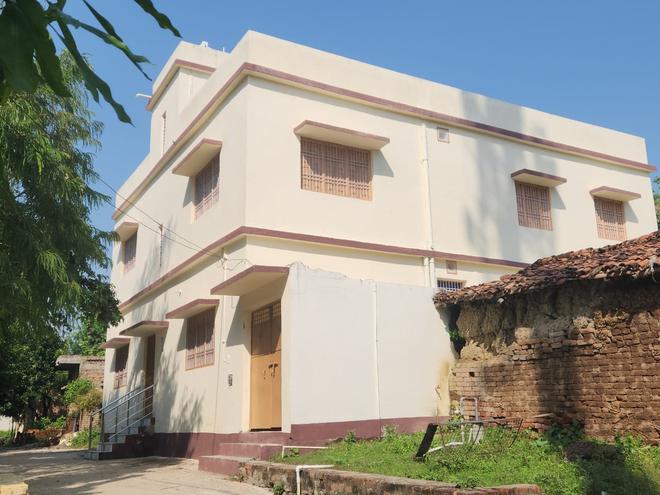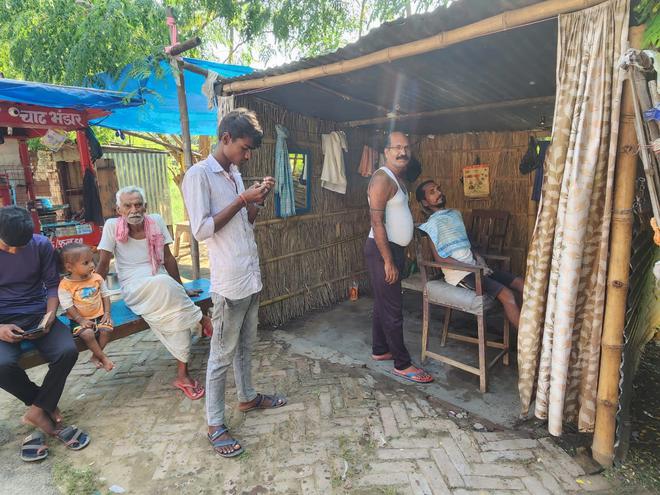After creating a political stir by releasing the results of the Bihar caste survey and setting an intent for other States to follow suit, the Rashtriya Janata Dal (RJD) and the Janata Dal (United) [JD(U)], the ruling partners in the mahagathbandhan government, have planned mass mobilisation efforts in the State centred on the survey results ahead of next year’s Lok Sabha election.
Both parties have formed teams to fan out to different districts and constituencies to hold mass interactions and take the message of the survey report to people at the grassroots level. However, in Kalyanbigha, Chief Minister Nitish Kumar’s hometown in Nalanda district, some residents are expressing scepticism about the report and do not think welfare schemes in the State will be formulated on its basis, while others have reposed faith in Mr. Kumar based on his track record.
Janardhan Singh, whose house lies adjacent to Mr. Kumar’s ancestral home in Barah panchayat, has reservations about the survey results. “It is a political move by the government ahead of the Lok Sabha poll. The report should be divided into two categories: poor and rich. Be it Kurmis, Yadavs, Brahmins, or Muslims, you will find the poor and rich across castes and religions. The survey report will not bring about any change in our lives,” he said.
Mr. Singh and the CM are part of the same Kurmi community, an OBC group that constitutes 2.87% of the population in the Harnaut Assembly constituency. One of the villagers said there are roughly 2,500 people in Kalyanbigha, with 650 families, mostly Kurmis, but none belonging to Rajput, Bhumihar, or Muslim communities.
On October 2, the government had published the results of the ‘Bihar Caste-based Survey 2022’, which revealed that extremely backward classes (EBCs) and other backward classes (OBCs) together constitute nearly 63% of the 13-crore population, making the backward classes the largest caste group in the State.

Structured plan
Following the release of the data, the JD(U) has added more vigour to its initiative, ‘Karpoori pe Charcha’, to hold discussions on the thoughts of Karpoori Thakur, a veteran socialist leader belonging to the EBC group and the State’s Chief Minister in the 1970s.
“We’ve launched programmes like ‘Karpoori pe Charcha’ and covered 63 out of the 243 Assembly constituencies in the State,” said JD(U) leader Ravindra Prasad Singh, adding that party leaders would soon cover all areas.
JD(U) insiders said the party has formed seven teams by dividing them into two sections: one for public outreach (jan sampark) and the other, a group of good orators, to apprise people of the survey’s findings.
The JD(U) has planned to hold a ‘Bhim Sansad’ (Bhim Parliament), a meeting of SCs in Patna on November 5. The party, on October 10, had flagged off several Bhim Sansad Raths to travel to different parts of the State and reach out to people for the November meeting. Party leaders from the SC community — Ashok Chaudhary, Sunil Kumar, and Ratnesh Sada — have been asked to hit the road and monitor mobilisation for the event.
Meanwhile, another villager in the Chief Minister’s hometown, Ravi Kumar, of the OBC Teli community, is also sceptical. “I don’t trust this report. What kind of benefit have I got after it — nothing. I also know that only politics will happen, no real work,” said the e-rickshaw driver, adding that the only information collected during the survey was the total number of members in a family.
“If they don’t ask who is earning and who is not, how will they make schemes for us?” he says.
Amid the JD(U)’s outreach efforts, sources in the RJD said the party has entrusted leaders from EBC, OBC, and Scheduled Caste (SC) groups to reach out to their communities in their respective areas.
“The EBC cell of the RJD, armed with the caste survey report, is already holding small meetings at block and district levels,” said RJD leader Abdul Bari Siddiqui. The party has split each division of the State into four parts and assigned leaders to visit various places, while roping in village heads.

‘Countering BJP’s politics’
The Opposition BJP has sought to discredit such efforts by terming the report “exaggerated, fake, and faulty”, with State party president Samrat Choudhary claiming it was “done in haste”. According to Nawal Kishore Choudhary, political analyst and former professor at Patna University, the survey was conducted to “reignite and revive the caste polarisation” of the 1990s Mandal Commission report for reservation, and “counter the BJP’s politics of polarisation on religious lines”.
Back in Kalyanbigha, several residents are also hopeful as they feel the Chief Minister himself has done good work. Indu Devi Paswan said it was the officers at the block and panchayat levels who created hurdles for the poor.
Vikas Kumar, another villager, said, “There was no road and electricity in our village, but today people are plying autos and enjoying round-the-clock electricity because of Nitishji. If he has executed the caste survey, something good will happen for us.”







